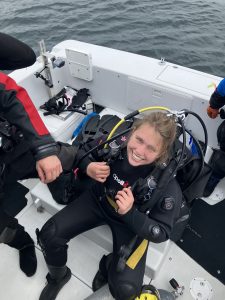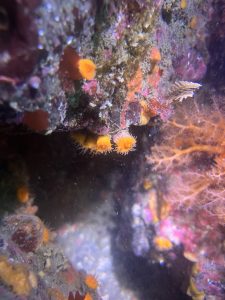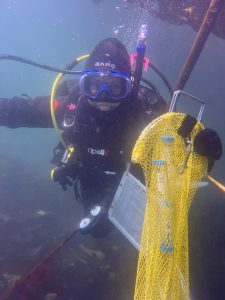Diving into Puget Sound research
Working towards a scientific diving certification is an aspiration for some Marine Biology students, opening up a whole new world underwater. For Cali Weber, in her senior year of study at the University of Washington, this journey towards scientific diving started in the summer of 2023 when she attained her diving certification in Chicago, IL. One of the drivers for this decision to get certified was in order to take the Marine Subtidal Ecology Class (MSE) based at Friday Harbor Labs (FHL) during the summer of 2024, which requires students to have 20 dives under their belt.
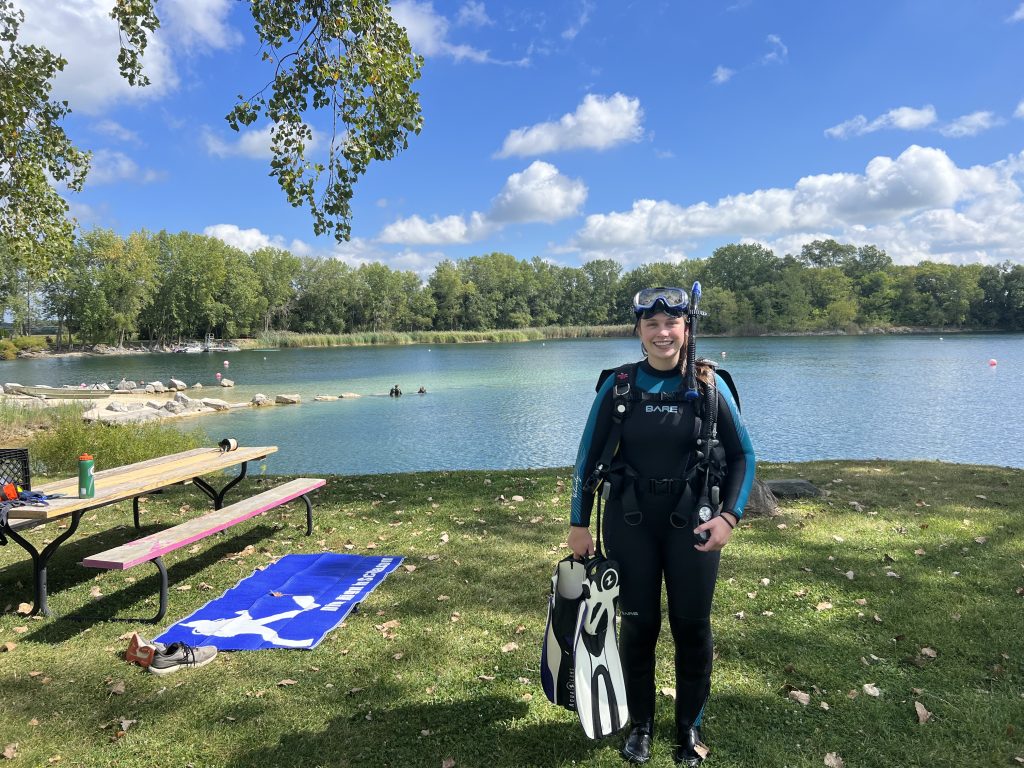
“I did both my open water and advanced certification over the summer to get as much dive practice as possible while being in Chicago, and then when I was back at UW in January 2024, I got my dry suit certification so that I could get a couple more dives with people in the Scuba Pups club,” Cali said. “I’m so grateful that I got into the MSE class, because I ended up learning so much about scientific diving at FHL from the amazing mentors we had.”
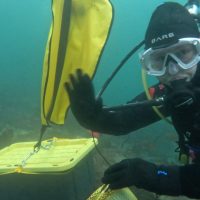
The next step for Cali was to work with the Puget Sound National Estuary Program as a volunteer diver for the Habitat Strategic Initiative Lead (HSIL), who was keen to not let her scientific dive authorization expire. “I also wanted to keep practicing diving, so I asked my project mentor at FHL if she knew anyone that was conducting scientific diving near UW that needed any volunteer help,” Cali shared. HSIL is focused on Puget Sound restoration, leading and supporting strategic actions to improve the health of local rivers, forests, shorelines, and estuaries that form Puget Sound. Cali’s diving role involved supporting benthic sensor maintenance through SCUBA diving in Puget Sound, assisting with field experiments, and conducting invertebrate and kelp surveys at various monitoring sites.
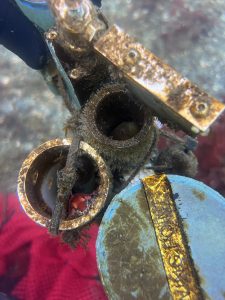
“The first type of dive I did was sensor removal and replacement where we cut zip ties to pick up the sensors that were collecting data on temperature, light, salinity, and more to replace them with new sensors,” Cali said. “Then I also got the opportunity to help with creating the experimental setup, building a rope 4×4 grid underwater, where each square was a different treatment.”
The final type of dive was looking at what the percent cover of different algae and kelp was, count specific invertebrate species, and measure the height of any bull kelp. “The team is one of many groups of people trying to understand what is impacting Bull Kelp in Puget Sound and how it can be restored,” Cali shared.
2024 was a busy year for Cali, as she was also working as a Research Assistant in the Padilla-Gamiño Lab at the School of Aquatic and Fishery Sciences (SAFS). Over the last six months, she has contributed to research on the reproductive biology of bull kelp by identifying developmental stages and quantifying the growth of microscopic gametophytes across varying environmental conditions.
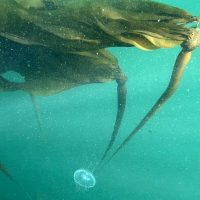
“This opportunity presented itself when I was studying FISH 310 (Marine Invertebrate Diversity) with Dr. Padilla-Gamiño and Miranda Roethler who was the TA in the lab. One day after lab, Miranda mentioned how she’s always looking for help and so in Winter 2025, once I returned from studying abroad, I joined her lab,” Cali said. Cali shared that the highlight of this experience has been the mentorship of Miranda. “I have learned so much about life after college, and about the kelp world from her. For this research, I was using Image J to analyze reproductive metrics and growth rate of kelp that she had grown in different environmental settings.”

As part of studying Marine Biology at UW, students are actively encouraged to pursue research opportunities to put their studies into practice. And connecting and networking is a key element of finding these roles. “If I hadn’t taken both MSE and FISH 310, I never would have gotten connected with amazing people who were willing to give me a chance to learn and help them with their projects,” Cali said. “Marine biology at UW has also given me the skills to understand and think about science critically. In both projects, we talk about observations we have and suggest possible reasons why they could be happening. Without my baseline Marine Biology classes, I wouldn’t be able to engage in those discussions.”
- Suited and booted: Cali gears up to go diving.
- Cup coral seen while diving at Point Caution.
- Cali holding sediment samples collected at Eagle Cove on Friday Harbor.
